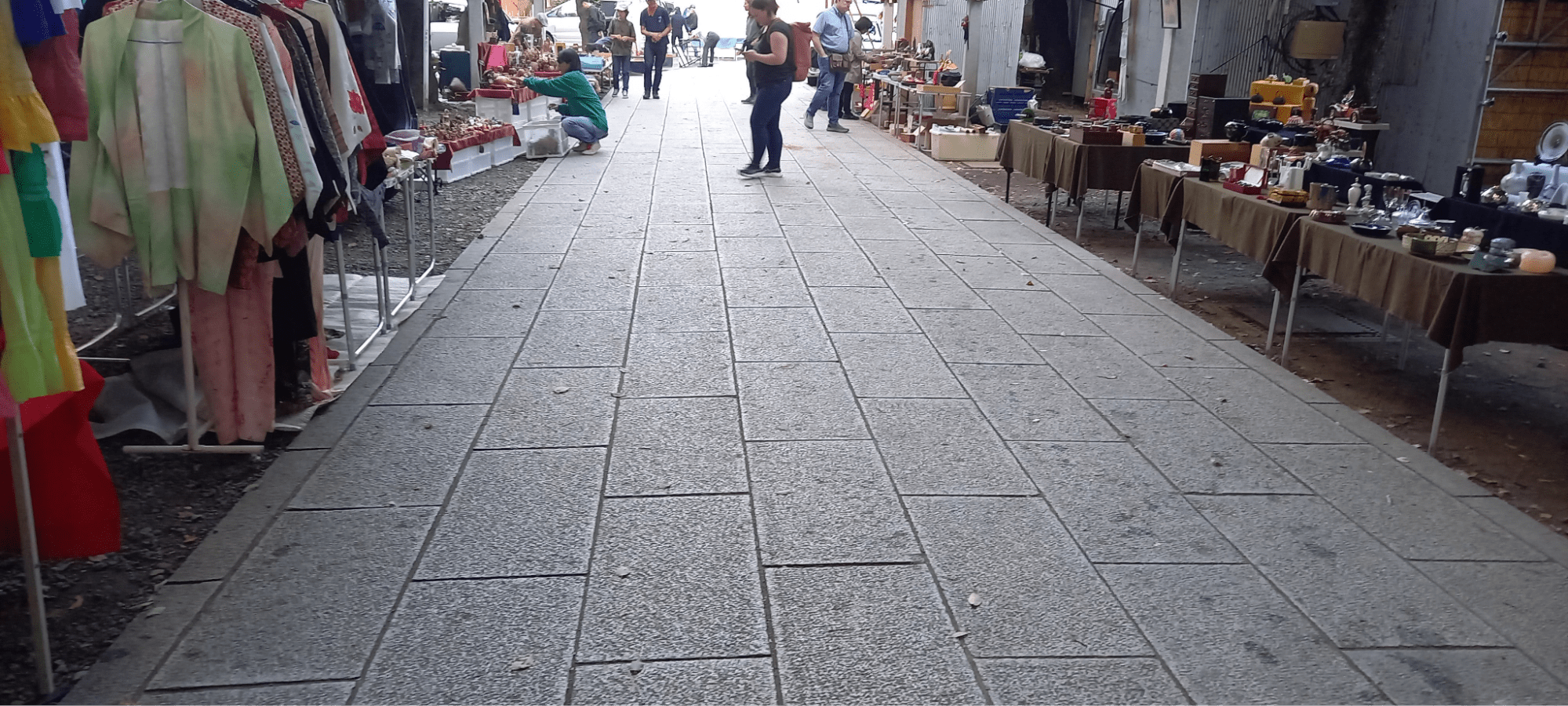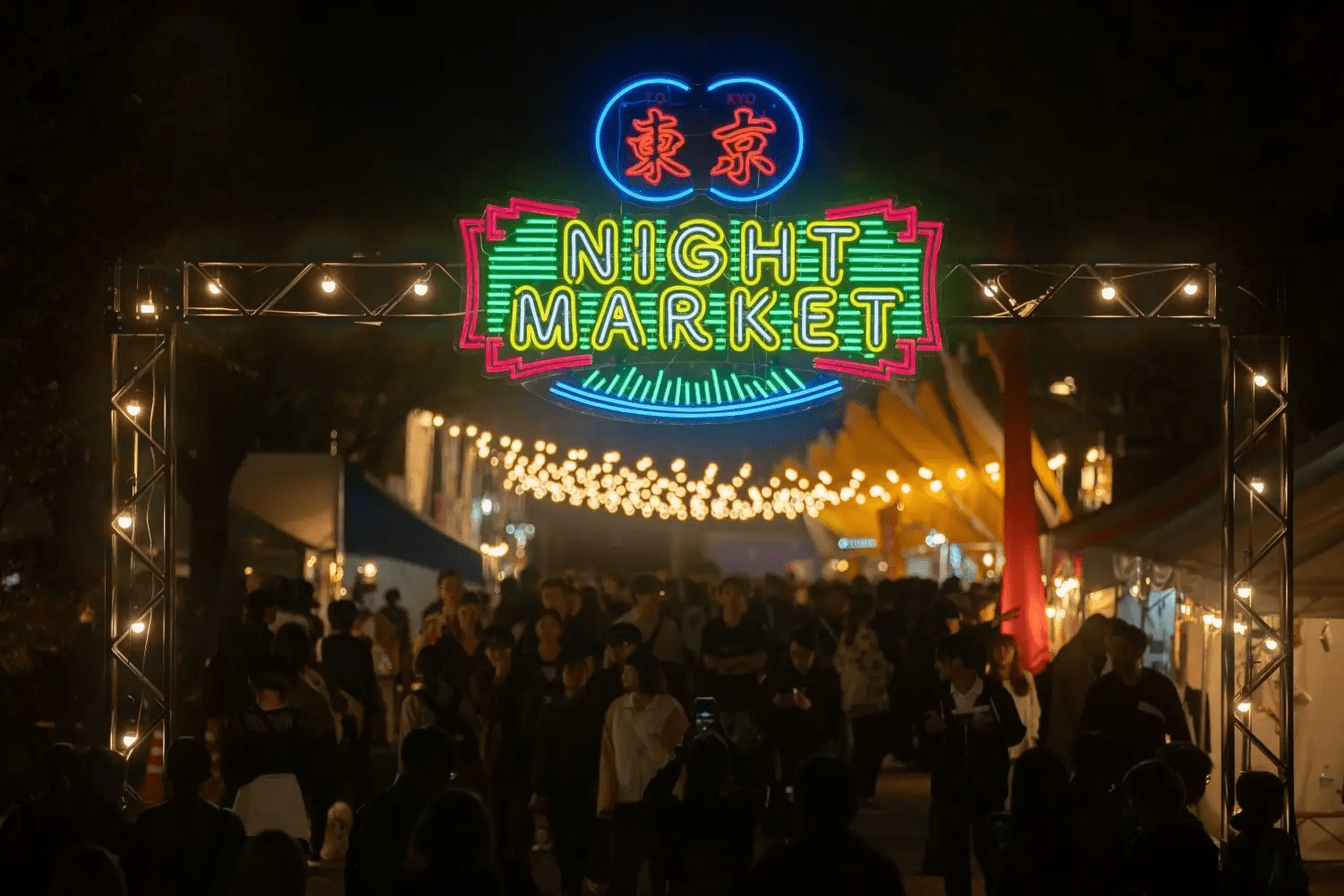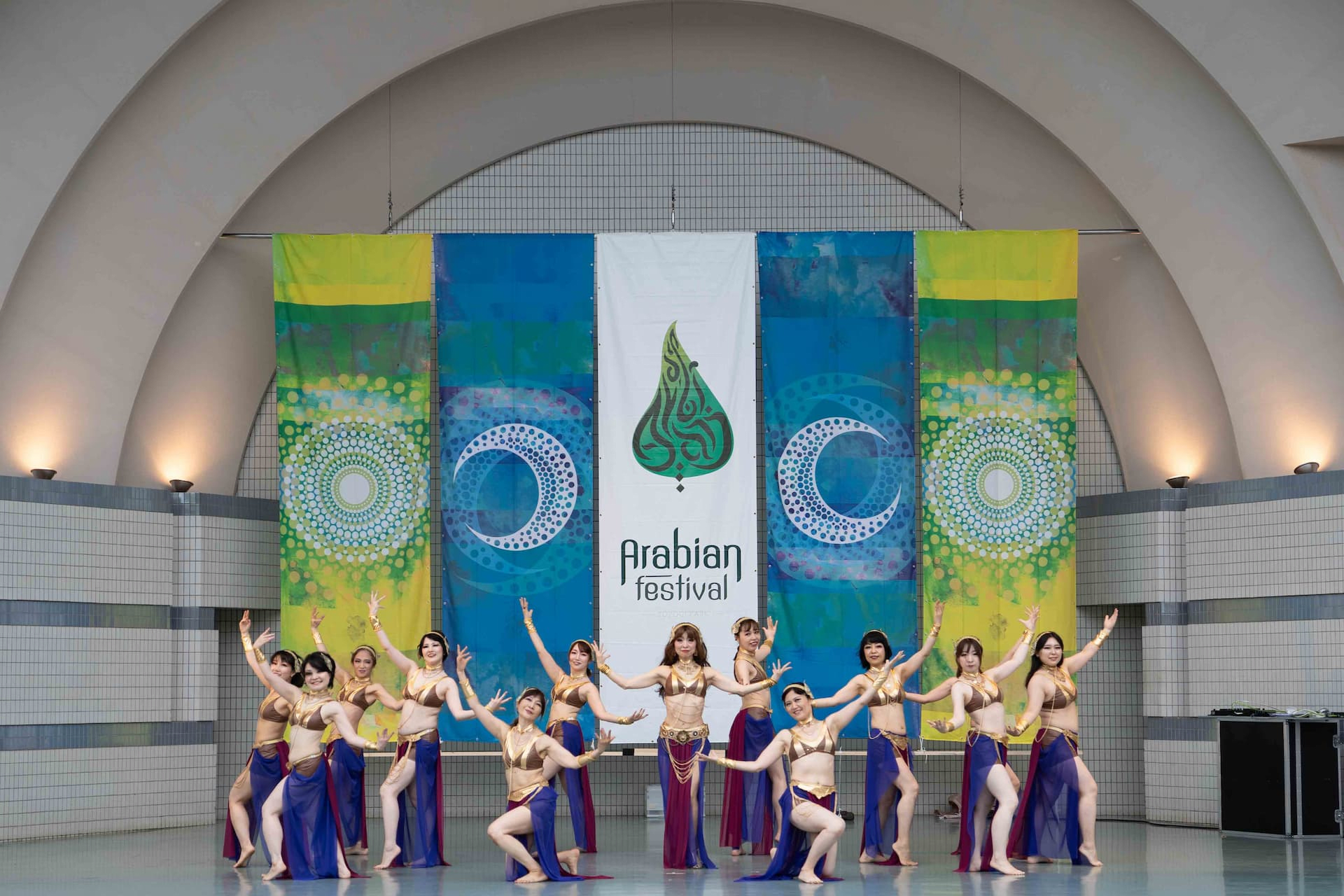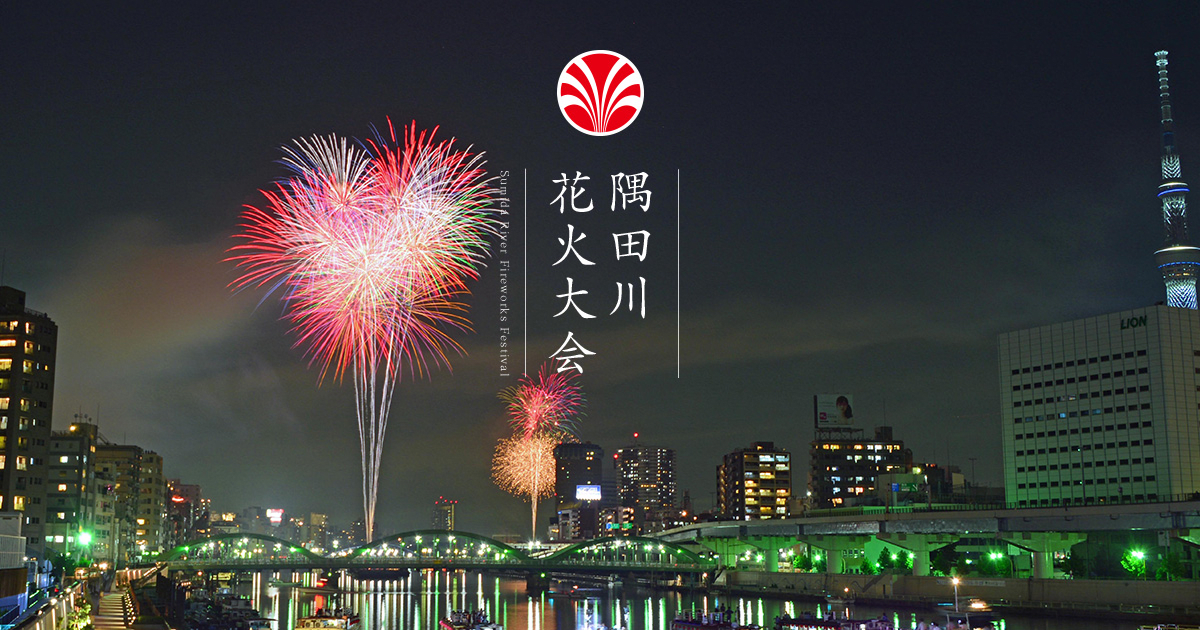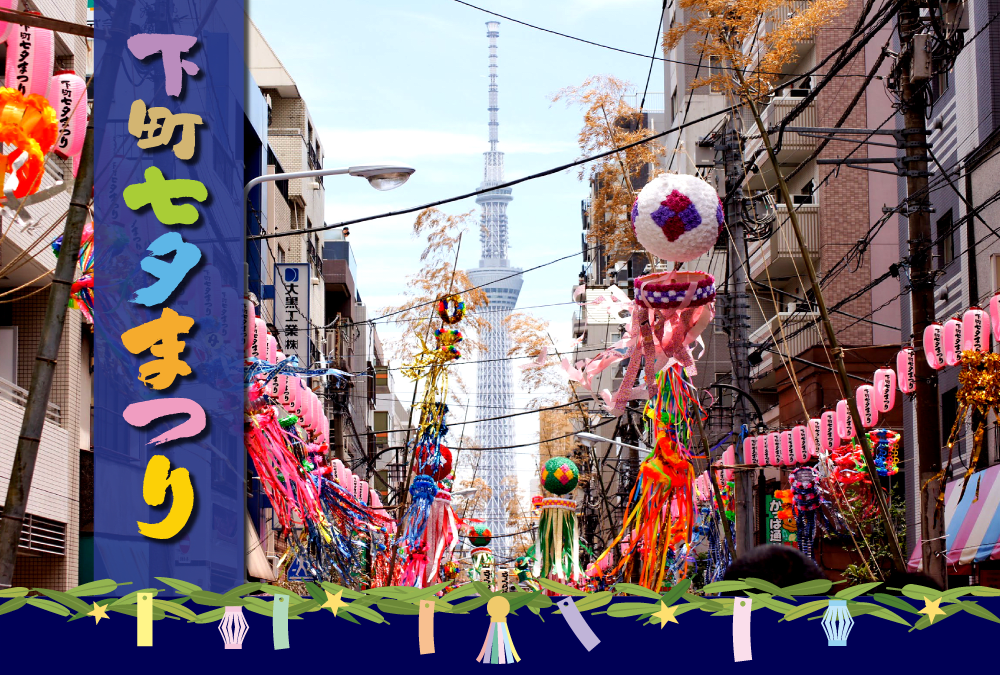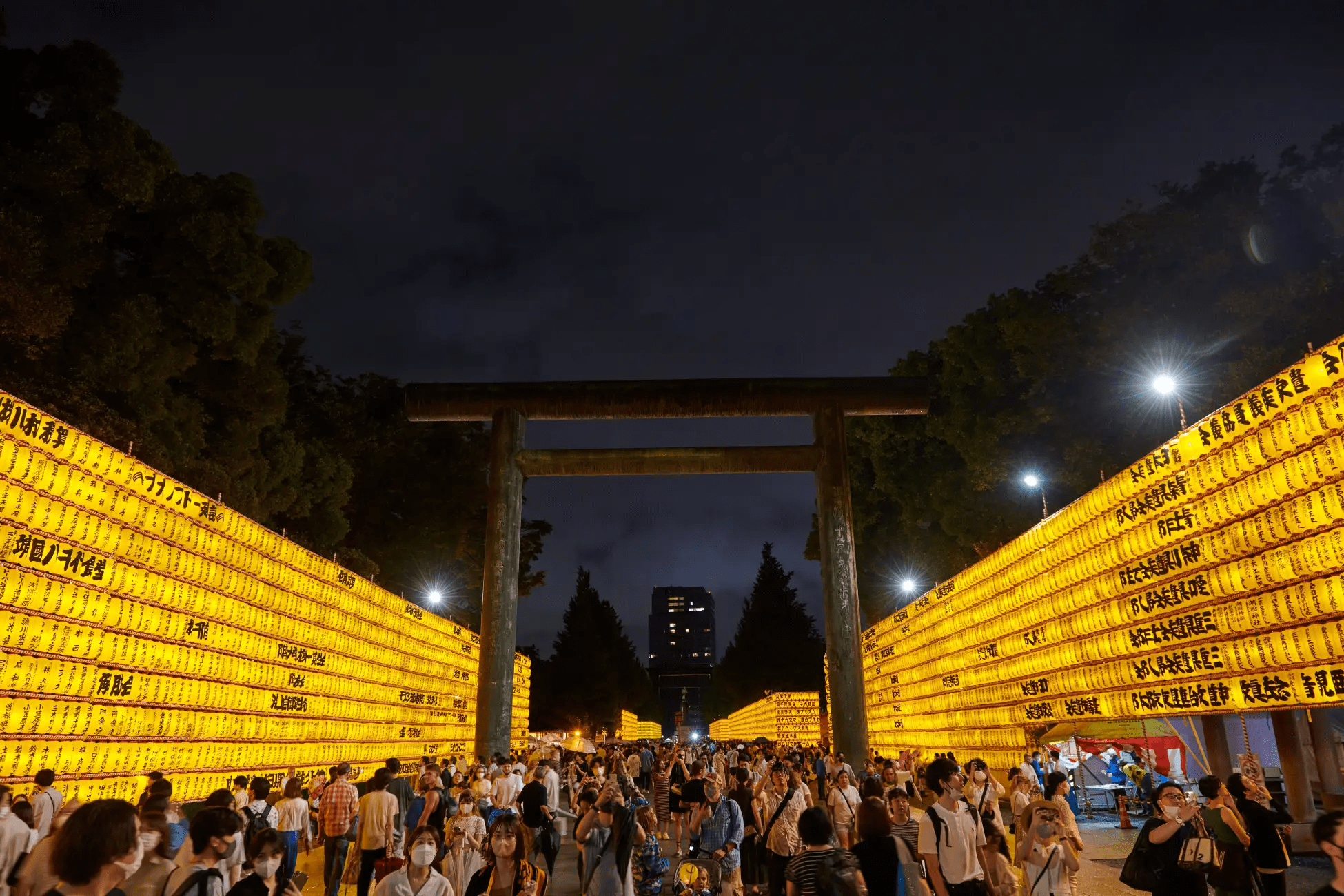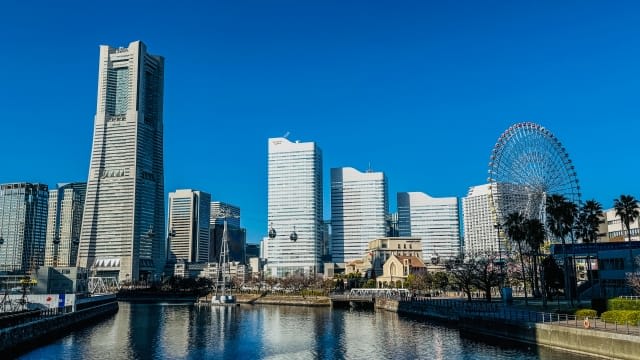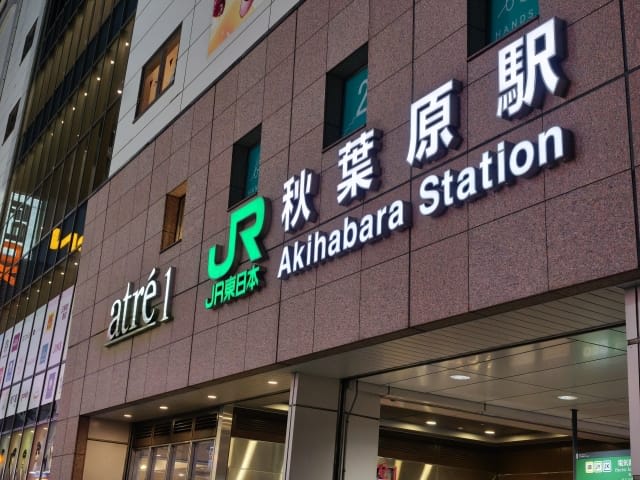Shinjuku in July 2025: Highlights, Events & Festivals
The maximum temperature in Tokyo in July rises to around 30 degrees Celsius, making short-sleeved shirts just right for the climate. Early July is the rainy season (a period of continuous rain and cloudy weather), so the weather is unstable, but once the rainy season ends, sunny days continue and many people go out to enjoy themselves.
Shinjuku is packed with long-established department stores, shopping buildings, and deep drinking districts, filled with charm that won't bore you even if you stay for a day. It's one of the top 1-2 bustling areas in Tokyo, characterized by crowds of people regardless of weekdays or weekends.
In July 2025, Shinjuku will host numerous unmissable events, including those with history and experiences unique to Shinjuku. This time, I'll introduce the highlights, basic information, timing, and access to these event venues.

The biggest event in Shinjuku in July is the "Shinjuku Eisa Festival 2025"
Source:Official website
The biggest event in Shinjuku in July is the "Shinjuku Eisa Festival 2025." The Shinjuku Eisa Festival is an event where you can see Eisa, a traditional Okinawan performing art, in Shinjuku. Held annually on the last Saturday of July, this summer tradition in Shinjuku attracts many visitors who come to see the Eisa performances.
Eisa is performed at various locations throughout Shinjuku, and there are also opening ceremonies, stage events, Okinawa tourism booths, and Okinawa-related events at nearby facilities, coloring Shinjuku in Okinawan colors.
What is Eisa?
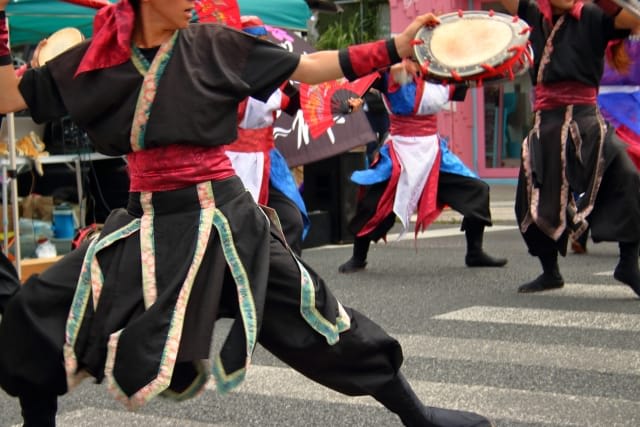
Eisa is one of Okinawa's traditional performing arts, a dance performed while beating drums to the accompaniment of Uta sanshin (a performance style of singing while playing the sanshin, a traditional Okinawan instrument) to honor ancestors.
The highlight is being able to watch young people dressed in gorgeous costumes performing powerful drum performances and rhythmical dances. The performers captivate the audience with their perfectly coordinated movements in each group. When I watched Eisa for the first time, I was captivated by its overwhelming performance.
If you watch the energy-filled Eisa performed by young people, you'll definitely experience a sense of exhilaration during this exciting Shinjuku event in July 2025.
History and origins of Eisa
There are various theories about the history of Eisa, but it is said to have started about 400-500 years ago.
It is said that when Okinawa was still the Ryukyu Kingdom, the Jodo sect was introduced, and people began to sing songs at funerals and memorial services to honor the deceased. In the Showa era, as entertainment elements were added to Eisa, people could enjoy not only traditional Eisa but also Eisa arranged in a modern style with unique performances. It was also around this time that women began to be active as dancers.
Now, Eisa is performed and attracts attention throughout Japan, even at events other than those where Eisa was traditionally performed.
What you should know to enjoy Eisa
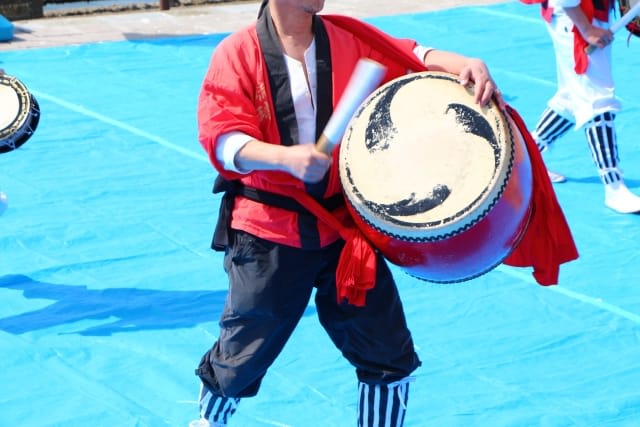
I'll explain the role assignments that make up Eisa, which you should know to enjoy it.
There are mainly 7 roles in Eisa:
- Large drum
- Small drum
- Jikata/Ji-ute (sanshin players and singers)
- Ikigamoi (male dancers)
- Inagumoi (female dancers)
- Flag leader (flag bearer)
- Choo-ndara (clowns who excite the audience)
In Eisa, led by the flag leader, powerful drums keep the tempo to the sanshin and songs of the jikata, while male and female dancers dance brilliantly. The white-painted choo-ndara encourages the dancers and interacts with the audience to liven up the atmosphere.
If you watch Eisa with attention to these roles, you'll be able to fully enjoy the charm of this traditional performance at the Shinjuku event in July 2025!
For Those Interested in Tradition and Japanese Culture, Tours with Locals are Recommended
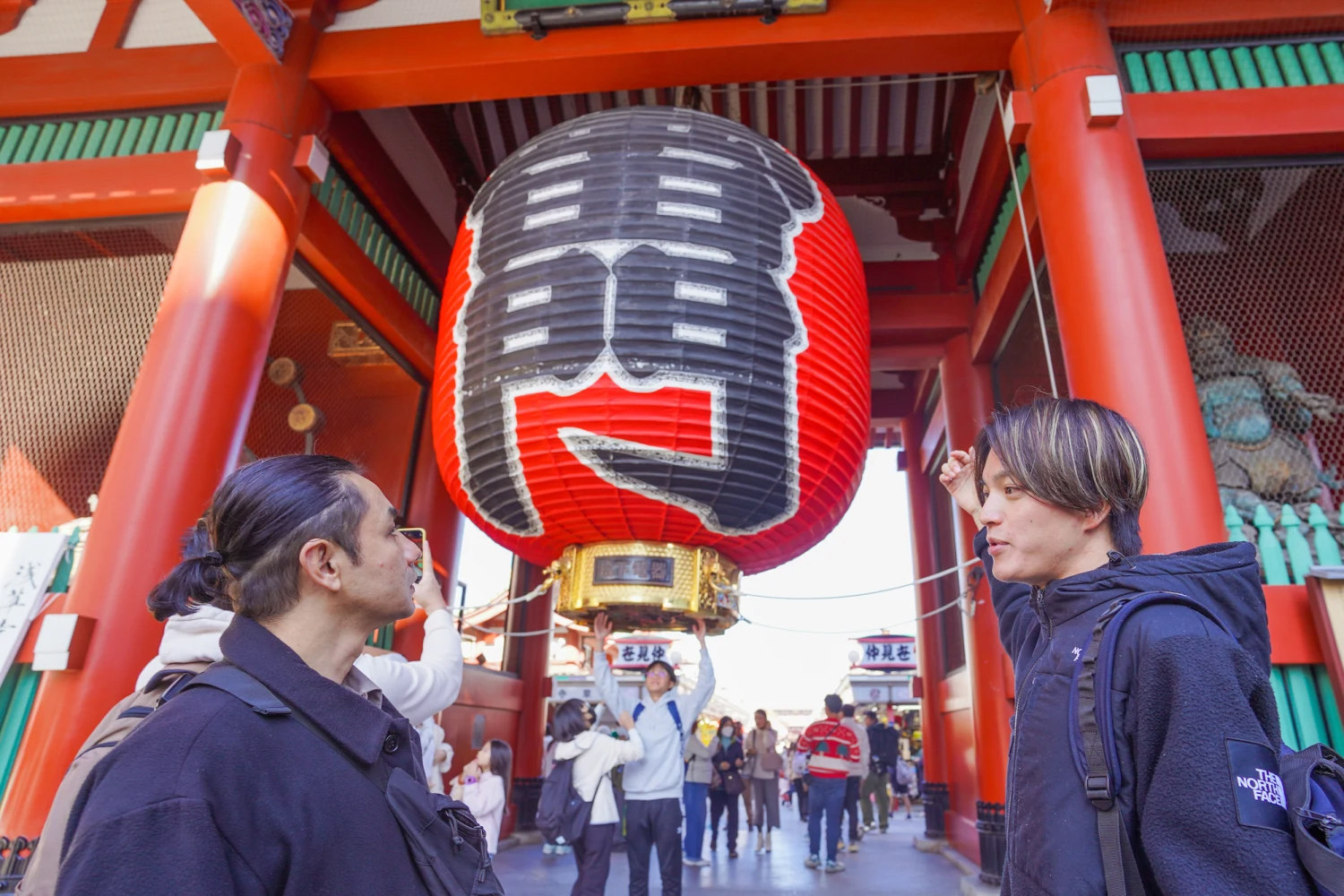
For those interested in tradition and Japanese culture, tours with locals are highly recommended.
The Asakusa Cultural Walk & Matcha Making Tour offers an experience that includes visiting Asakusa, a tourist spot that evokes Japanese history, along with experiencing the traditional Japanese culture of tea ceremony (serving tea to guests according to formal procedures). The tour visits 5 locations:
- Kaminarimon
- Nakamise Shopping Street
- Sensoji Temple
- Tea Ceremony Experience
- Hoppy Street (Monjayaki lunch)
On the tour, you can take photos at Kaminarimon, which is considered a symbol of Asakusa and is famous for its large red lantern, eat traditional Japanese sweets at Nakamise Shopping Street with its 300-year history, and learn about history from guides at Sensoji Temple.
Among these, my personal recommendation is the tea ceremony experience conducted in a Japanese tea room. In this quiet space that makes you forget you're in bustling Tokyo, preparing tea will release you from your busy daily life and allow you to relax deeply.
〈Meeting point〉
- Tour area: Asakusa
- Start time: 11:00
Special Experiences in Shinjuku for July 2025
Here, I'll introduce some special events you can experience in Shinjuku during July 2025.
Hanazono Shrine Antique Market
Source:Official X
The Hanazono Shrine Antique Market is a flea market held at Hanazono Shrine, which has been beloved in Shinjuku since before the Edo period began. It takes place every Sunday from 6:30 until sunset, with about 40 vendors gathering. The market is packed with various items including pottery, retro goods, and paintings, making it enjoyable just to browse.
I once stopped by after visiting the shrine and fell in love at first sight with a small bowl perfect for everyday use. Although I'm not usually an impulse buyer, I felt destined to purchase this item that I couldn't find anywhere else.
The market is easily accessible from the busy downtown area, so please drop by while sightseeing.
<Information>
- Date: Every Sunday
- Access: Immediately from Shinjuku-sanchome Station on various lines, 7-minute walk from Shinjuku Station
- Admission: Free
- Website: http://kottou-ichi.jp/
Tokyo Night Market 2025
Source:PR TIMES
Tokyo Night Market 2025 is an event held at Yoyogi Park's Keyaki Avenue with the concept of "Enjoying Asian night markets in Tokyo."
I visited with a friend who loves Asian culture. When you step into the market, you'll hear music that makes you want to dance, instantly lifting your spirits!
At the venue, not only are there abundant food and drink menus, but you can also enjoy various performances and shopping at Asian goods stores. I entered when it opened at noon and was surprised to find it had gotten dark outside before I realized it. As night falls, the neon lights begin to shine, creating a different atmosphere from daytime, which is another attractive point.
The information desk offers English language support to make it easier for international tourists to participate. Why not join in and enjoy drinking, eating, and dancing in this lively venue until it closes at 10 PM?
<Information>
- Dates: July 2-6, 2025
- Access: 9-minute walk from Harajuku Station on the Yamanote Line or Meiji-jingumae Station on the Chiyoda Line
- Admission: Free
- Website: https://tokyo-night-market.com/
Arabian Festival 2025
Source:Official website
Arabian Festival 2025 is an outdoor festival event that mixes Middle Eastern and Tokyo cultures, held at the Keyaki tree-lined avenue in Yoyogi Park. At the main stage, you can enjoy belly dancing performances by women in gorgeous costumes, DJ live music, and in the market area, you can shop for Middle Eastern cuisine and goods.
The highlight is the Exotic Bon Dance (a fusion of freestyle Bon dance and belly dancing). Dancing this unprecedented blend of Japanese tradition and exotic culture is stimulating and will become a memorable experience. When I participated in the dance, it was impressive to see people of all backgrounds laughing and enjoying themselves together, regardless of race.
This July 2025, tourists visiting Shinjuku can make a special trip to this event that's just a short train ride away. The festival offers an accessible way to experience Middle Eastern culture through food and dance.
<Information>
- Date: July 2025 (exact date TBD)
- Access: 9-minute walk from JR Yamanote Line Harajuku Station or Chiyoda Line Meiji-jingumae Station
- Admission: Free
- Website: https://arabian-fes.com/ (2024 site)
3 Must-Attend Events Recommended by the Author When Visiting Tokyo in July
Here are three events in Tokyo that the author strongly recommends attending if you visit in July.
Sumidagawa Fireworks Festival
Source:Official website
The Sumidagawa Fireworks Festival is a historic fireworks display that began in the mid-Edo period and is held along the Sumida River. Beloved as a summer tradition in Tokyo, approximately one million spectators gather each year to see the 20,000 fireworks.
The highlight is enjoying different fireworks displays at two venues. At the first venue, there is a fireworks competition featuring vendors who have achieved excellent results at Japan's leading fireworks festivals. At the second venue, creative fireworks and "starmines" (dozens to hundreds of fireworks launched consecutively) provide a powerful spectacle. During the festival, you can enjoy a feast of colorful lights adorning the night sky—I became so entranced by the fireworks that I forgot about the summer heat.
While staying near Shinjuku in July 2025, tourists should make time for this spectacular event. The Sumidagawa Fireworks Festival is large-scale, so you can view it for free from bridges, roads, and parks around the venue. However, for those wanting to avoid crowds or enjoy the fireworks in comfort, I recommend reserving paid seating in advance.
<Information>
- Date: July 26, 2025
- Access: 5-minute walk from Kuramae Station, 15-minute walk from Asakusa Station (25 minutes from Shinjuku at shortest)
- Admission: Free (paid seating available)
- Website: https://www.sumidagawa-hanabi.com/
Shitamachi Tanabata Festival
Source:Asakusa Tourism Federation
The Shitamachi Tanabata Festival is a Tanabata event held every July on Kappabashi Main Street in Asakusa. Tanabata refers to the special day when, according to the Tanabata legend, Orihime and Hikoboshi meet once a year on July 7th. It's said that if you write your wish on a tanzaku (a long, thin strip of paper used for attaching to objects) and hang it on bamboo, your wish will come true.
The street is lined with decorations and bamboo symbolizing Tanabata, creating a festive atmosphere. The event features local parades and street performances, making the venue lively and bustling. Food perfect for snacking is also available, so enjoy the festival while sampling various treats.
My recommendation is the traditional Tanabata custom of writing wishes on tanzaku and hanging them on bamboo at the venue. Anyone can participate, so experience Japanese traditional culture by decorating bamboo with your tanzaku. Tourists staying in Shinjuku during July 2025 will find this event offers a perfect opportunity to immerse themselves in authentic Japanese cultural traditions.
<Information>
- Date: July 2025 (exact date TBD)
- Access: 3-minute walk from Asakusa Station, 5-minute walk from Hibiya Line Iriya Station, 5-minute walk from Ginza Line Tawaramachi/Inaricho Stations, 8-minute walk from JR Ueno/Uguisudani Stations (45 minutes from Shinjuku at shortest)
- Admission: Free
- Website: http://shitamachi-tanabata.com/ (2024 site)
Mitama Matsuri
Source:PR TIMES
Mitama Matsuri is a festival held at Yasukuni Shrine during Obon (a summer traditional culture to honor ancestors) to console the spirits of those who sacrificed their lives for Japan.
The highlight is over 30,000 donation lanterns, large and small, decorating both sides of the path. These lanterns (offered to shrines and temples as expressions of gratitude to ancestors) and hanging lanterns with calligraphy by famous people create a spectacular sight. As evening falls, they illuminate the night path with a brilliant glow, adding elegance to the festival.
When I visited the festival, powerful performances such as Aomori Nebuta (a summer festival attraction originating from Aomori Prefecture) and Awa Odori (a bon dance originating from Tokushima Prefecture) were also held, filling the venue with excitement.
Special Mitama Matsuri items such as tenugui (traditional Japanese flat-woven cloth) and fans are also available. Why not take some home as souvenirs?
<Information>
- Dates: July 13-16, 2025
- Access: 5-minute walk from Kudanshita Station, 10-minute walk from Iidabashi/Ichigaya Stations (25 minutes at shortest from Shinjuku)
- Admission: Free
- Website: https://www.yasukuni.or.jp/news_detail.html?id=558 (2024 site)
For summer in Shinjuku, food hopping while enjoying the refreshing evening breeze is recommended
For summer in Shinjuku, I recommend food hopping while enjoying the refreshing evening breeze.
Tokyo Bar Hopping Night Tour in Shinjuku

The Tokyo Bar Hopping Night Tour in Shinjuku allows you to visit three bars and pubs in Shinjuku recommended by local guides that only insiders know about.
The tour visits famous drinking districts in Shinjuku such as "Omoide Yokocho" and "Kabukicho," where you can enjoy yakitori, agedashi tofu, gyoza, and other snacks along with drinks, choosing from over 30 menu items. Since these are shops popular with locals, you can experience Japanese drinking culture among them.
Come enjoy Tokyo's nightlife in Shinjuku during your visit to this exciting July 2025 event!
<Meeting point>
- Tour area: Shinjuku
- Start times: Every 30 minutes from 17:00-19:00

Tokyo Night Foodie Tour in Shinjuku
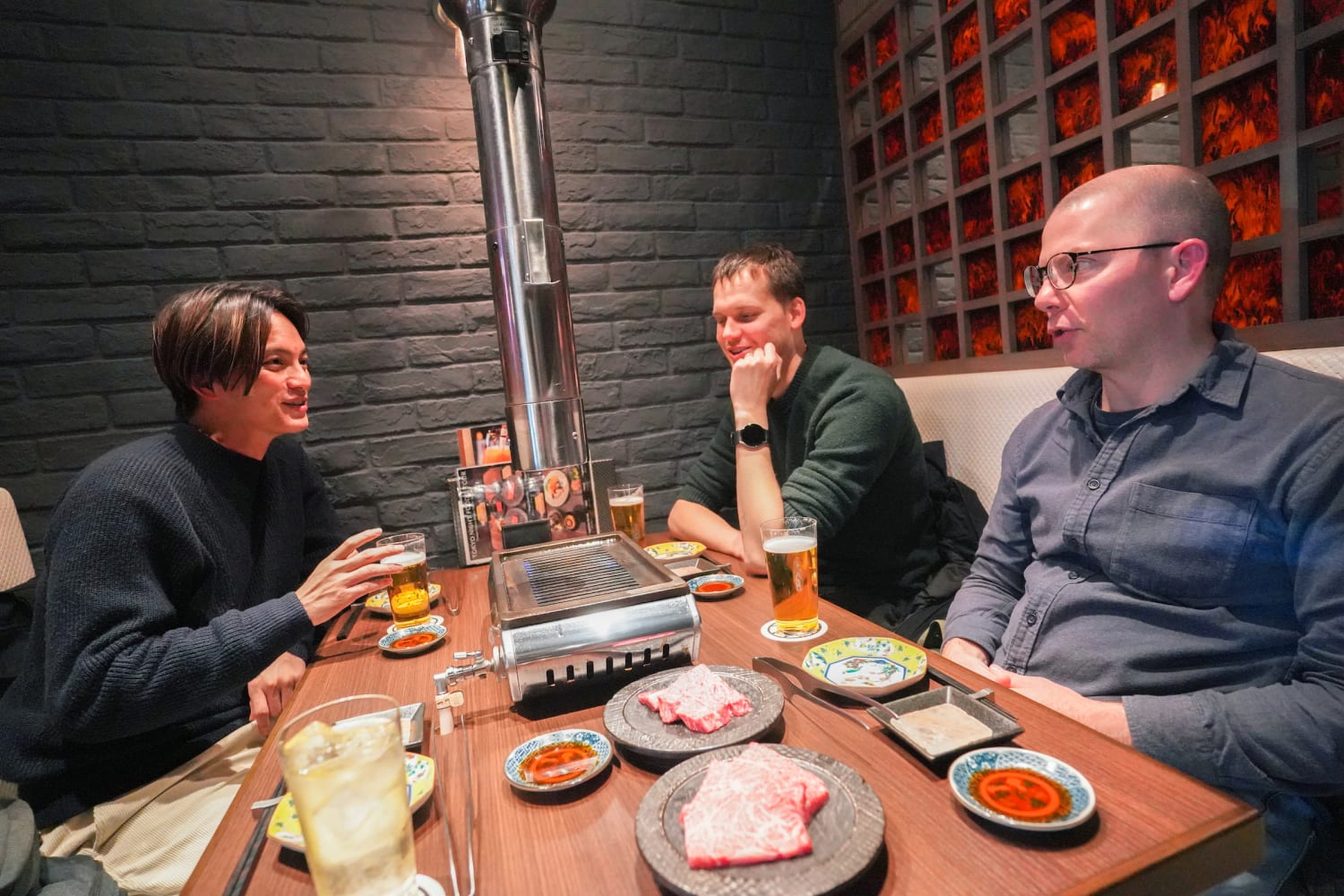
At the Tokyo Night Foodie Tour in Shinjuku, you can enjoy sushi and wagyu yakiniku, which are must-tries when visiting Tokyo.
At the first sushi restaurant, you can savor exquisite sushi while watching skilled sushi chefs prepare it right before your eyes. Next, at the yakiniku restaurant, you can grill world-renowned Japanese wagyu beef yourself on tabletop grills.
The charm of both restaurants is enjoying freshly made food. The deliciousness of these fresh dishes will surely make your drinks taste even better.
<Meeting point>
- Tour area: Shinjuku
- Start times: 17:00, 18:00, 19:00


